Many of us have heard of cryotherapy in passing, maybe during a commercial or in a pamphlet at the doctor’s office, what is it actually? Let me give you a hint, it’s not a solution, for drying your tears.
Cryotherapy, or cold therapy, involves applying cold temperatures to the entire body or specific areas, and is most often used to treat a range of both physical and mental disorders. It has the potential to improve your overall health in myriad ways, including promoting better sleep. In this article, I will dive into what cryotherapy is, how it can promote a good night’s rest, and tips for improving your sleep quality. Grab a blanket because you’re in for a serious temperature drop. Let’s get into it!
What is Cryotherapy?
Cryotherapy, also known as cold or ice therapy, is a medical treatment that utilizes cold air to treat a variety of bodily concerns, such as disease symptoms, athletic injuries, chronic pain, skin conditions (like warts or skin tags), weight loss, and in some cases, even cancer cells. Though it varies depending on the size of the area being treated, these treatments are fairly short and often occur in numerous sessions, which ensures the effectiveness of treatment while keeping the extreme temperature exposure in mind. In whole body cryotherapy (WBC) treatments, patients enter cryogenic, or cryotherapy chambers, which can be electrical or liquid nitrogen, that can drop to a frosty -160° C. (1)
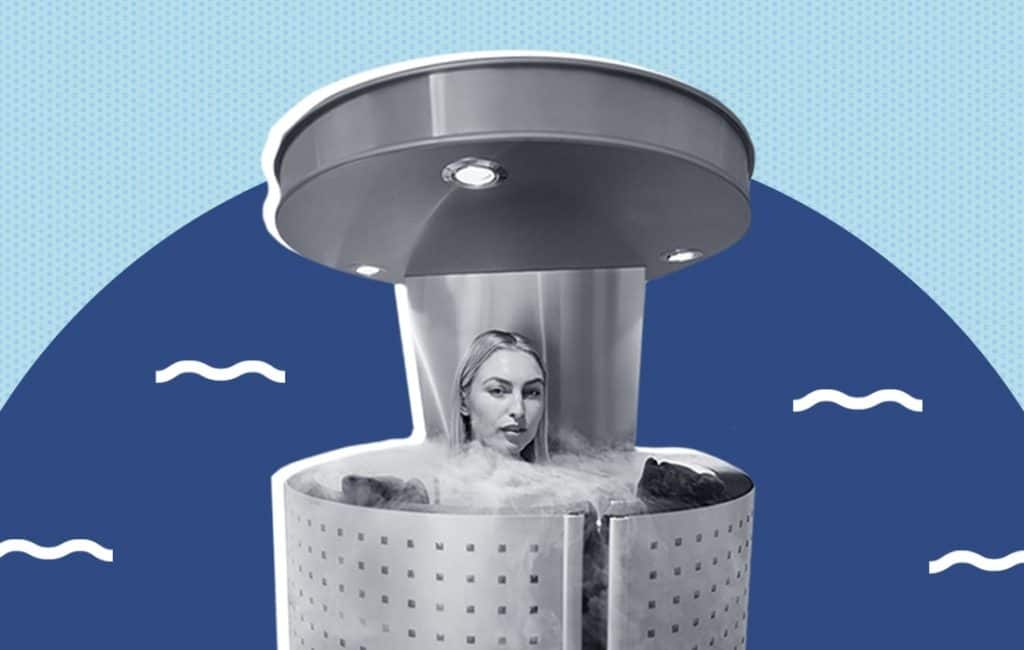
This glacial therapy practice has roots all the way back to 2500 BCE, with the Egyptians utilizing cold temperatures to treat different bodily afflictions and swelling.(2) However, modern cryosurgery didn’t commence until 1913, with the invention of a liquid nitrogen cryoprobe, which is used for tissue removal, or cryoablation. This led to the eventual standardization of the healthcare practice we see today, which exists in many varieties. (3)
So what can one expect when heading into receiving their own cryotherapy treatment? Your first step should be identifying your specific need, like muscle pain or stress, as well as finding a local spa, wellness center, or physical therapist that offers the treatment you’re looking for. Most facilities that perform cryotherapy offer whole body and local options, but I’ve even found some doing cryotherapy facials! Local has to do with a specific area you’d like treated. You’ll find many places that utilize local cryotherapy to target fat cells for various weight loss goals as well. This will likely be done with a handheld device to a concentrated area on the body.
If you choose the whole body option, you’ll enter a room with a device often called a cryochamber or cryosauna:
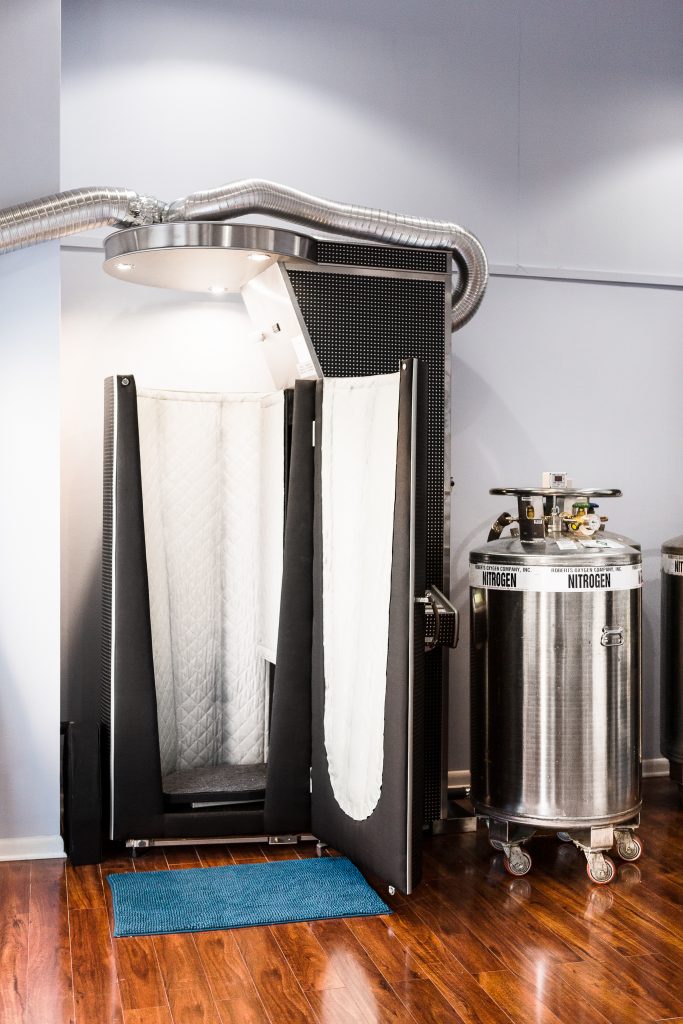
I think of it almost like a stand-up spray tan, but don’t worry, your head will definitely be outside the chamber! You’ll remove your outer clothing, enter the chamber, and undergo a short session of exposure to extremely cold temperatures. It’s important to note that bras, underwear, or bathing suits are often worn, in addition to gloves and shoes, which help to protect the extremities. Cryotherapy sessions can range from 30 seconds to 3 minutes, but it will depend on the treatment type and how many sessions you need or want.
Cold Therapy and Sleep Quality
So we know what cryotherapy is, now what? Being the sleep-centric expert that I am, of course I had to dig into some data on how it relates to sleep! Let’s get into some data we found on the potential benefits of cryotherapy as an influence on sleep quality.
For athletes, it’s long been known that cryotherapy can be a helpful tool for healing injury, but it can also help them sleep better. One whole-body cryostimulation study on twenty-seven basketball players included exposure to -130°C, 3 minutes each day, for a week. During this time, the athletes wore only underwear, gloves, socks, and slippers. The results showed that their quality of sleep improved by 15%. It also improved their mood and states of relaxation. (4)
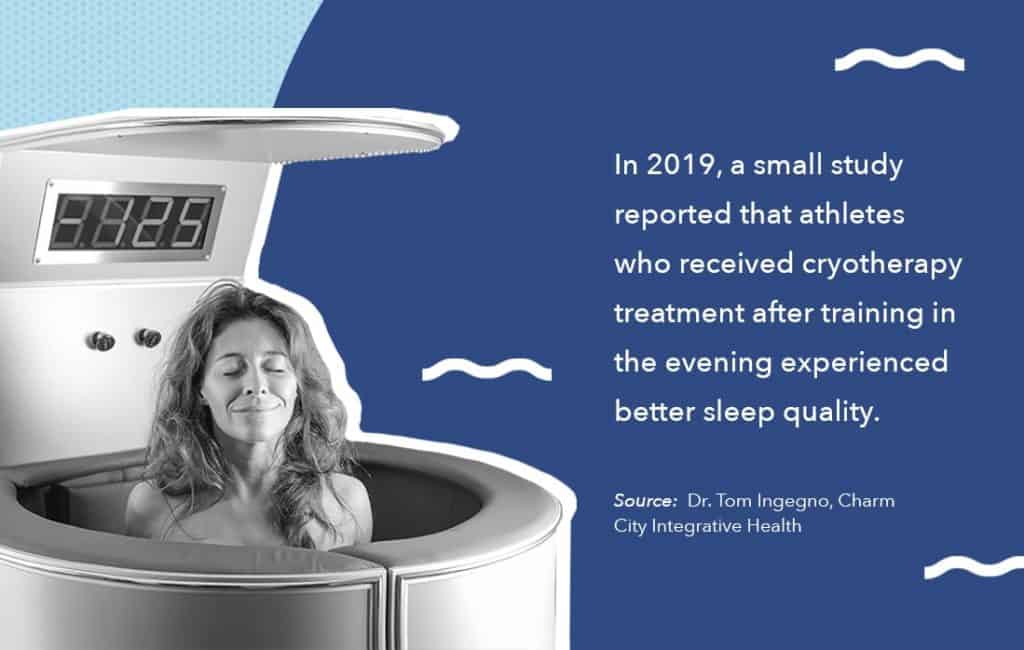
According to Dr. Tom Ingegno, doctor of acupuncture and Chinese medicine at Charm City Integrative Health, in 2019, a small study reported that athletes who received cryotherapy treatment after training in the evening experienced better sleep quality. He also stated that “Many cryotherapy patients report a great night of sleep the evening after cryotherapy. It is a pleasant surprise for many first-timers.”
Ingegno also noted the improvement cold therapy can have on your mental well-being. “Cryotherapy has been shown to help with anxiety and depression, which can keep people up at night. Easing either condition can promote a more restful night.” Whether it’s stress from an upcoming presentation at work or financial struggles at home, many can experience sleepless nights filled with worry. This lack of sleep can make you irritable and less productive, potentially exacerbating existing concerns. Cryotherapy can help reduce outside anxiety-triggers at bedtime, making it a useful treatment for many individuals with irregular sleep patterns, or even sleep disorders like insomnia.
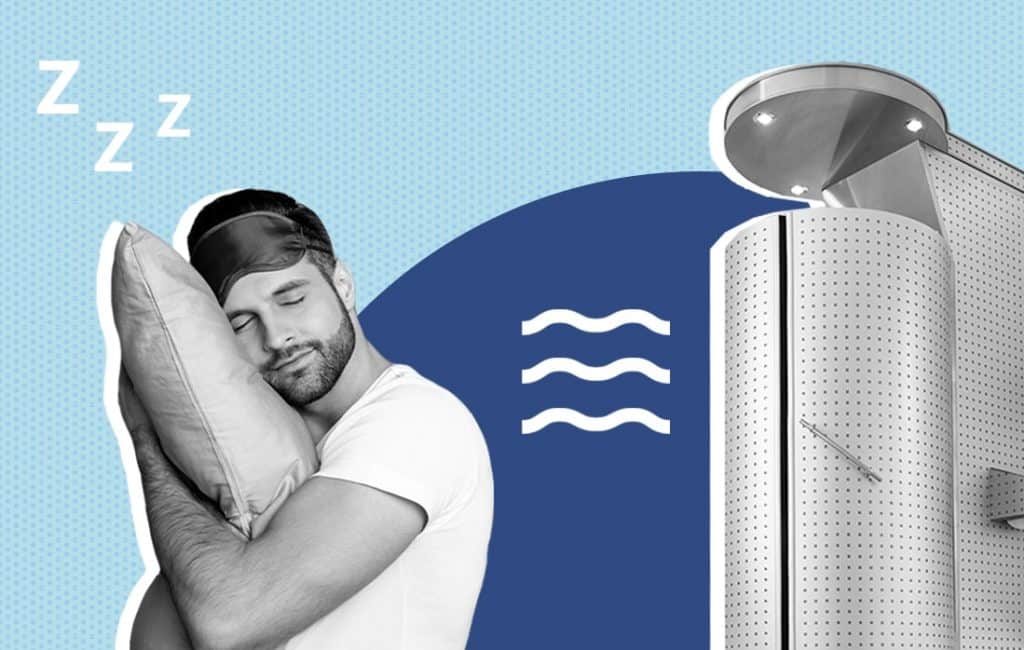
Did you know that cryotherapy can affect back pain too? Back pain is a common ailment affecting nearly 16 million or 8% of adults, and can negatively impact sleep. (5) One study tested the effects of a combination of cryotherapy and thermotherapy, alongside prescribed analgesic (pain-relieving) medication, for acute lower back pain. This study included 87 patients, with 3 groups of 29 people. This mix of both hot and cold therapy proved to relieve back pain. (6)
For more on improving your back pain, paired with a good night’s sleep, I recommend checking out our best mattresses for back pain.
Tips for Better Sleep
Now that you’ve learned more about the impact cold therapy can have on rest, I’ve gathered some expert recommendations and tips that assist you in improving the quality of your sleep.
Room temperature – According to a study in Indoor Air, the International Journal of Indoor and Environment Health, your thermal comfort and sleep quality can be improved by subjecting certain areas of the body to cool temperatures, even when sleeping in a hot room. The best improvements were seen in the back and neck specifically, which were subjected to a room temperature of just 32°C. (7) This proves to show that certain levels of cooling, high or low, can have some serious benefits for a more restful sleep.
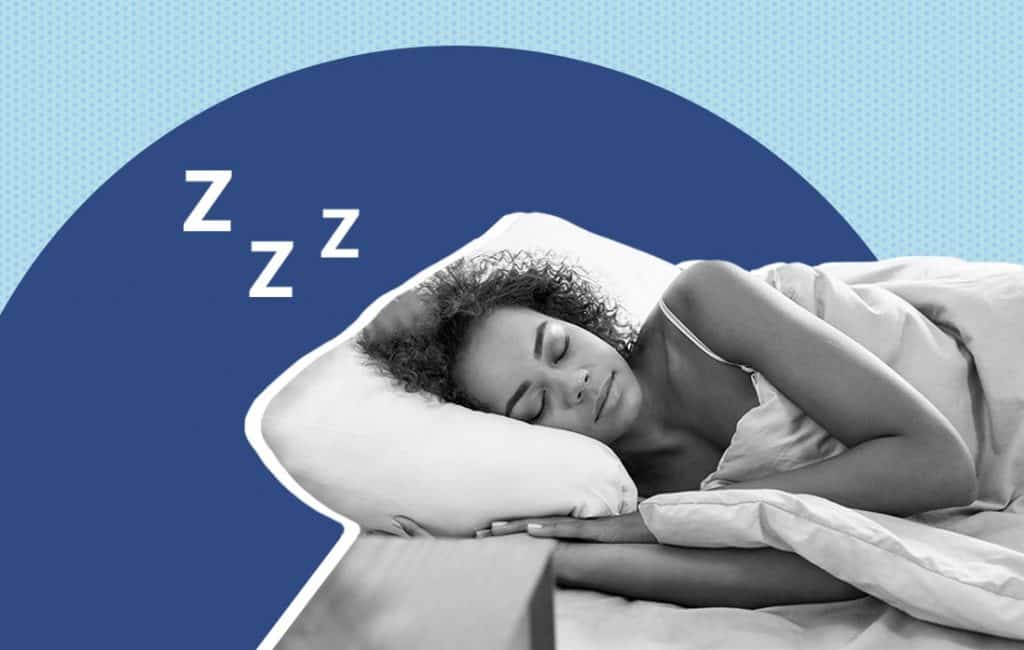
Shower before bedtime – It’s no secret that hopping into a cold shower can help you wake up and feel more energized, so how could this practice improve sleep? The Wim Hof Method, a deep breathing technique, enforces the idea that taking cold showers, alongside breathing exercises and meditation, will expose your body to lower temperatures, in turn leaving you better rested. It’s likely that these practices will not only make it easier for you to fall asleep at night but will also provide more energy for the next day. (8)
Additionally, Dr. Ingegno also stated that “cryotherapy has been shown to have a strong effect on the vagus nerve which allows for the balancing of the sympathetic (fight/flight) response and the parasympathetic response (rest/digest). It’s theorized that this balancing allows people to “turn off” more easily at night.” (9)
Cold compress – It looks like your mom’s old practice of placing an ice pack on your head to help you feel better still holds up. Science shows that sleeping in an environment that’s particularly warm can be hard since we need our body’s core temperature to go down before our brains can activate preparations for sleepiness. (10) According to Dr. Chelsie Rohrscheib, who has a Ph.D. in Neuroscience with a specialization in sleep dysfunction and is the head sleep specialist at Wesper, “Using cooling techniques, such as using a cold compress on the forehead or back of the neck can trick the brain into believing the entire body has cooled enough to initiate sleep.”
Dr. Rohrscheib cited research showing how “cool temperatures also help the nervous system adjust from a sympathetic state (the part of the nervous system responsible for energy and stress) to the parasympathetic state (the part of the nervous system responsible for resting, which is required for quality sleep.” (11) Cooling leads to snoozing! Dr. Ingegno seemed to agree as well, noting that the “endorphin rush that occurs during cryotherapy creates a cascade of feel-good neurotransmitters that helps people unwind in the evening.” If you’re interested in trying your own cryo-compress before bed, some examples include a damp cloth, an ice or gel pack, and even the ever-classic ice cubes in a plastic bag.
Potential Cryotherapy Side Effects
While cryotherapy can improve a wide range of ailments and problems, it’s important to be aware of its potential side effects. Below, you’ll find a list of these side effects:
Breathing
Liquid nitrogen, which is quite common in cryotherapy for cooling, reduces the amount of oxygen in a closed room. This could be hazardous as it potentially can cause hypoxia (oxygen deficiency), loss of consciousness as a result of hypoxia, and at worst, asphyxiation. However, it’s important to note that these potential side effects are related to the FDA’s assessment of the effect of whole-body cryotherapy. (12) Dr. Ingegno noted that “every machine on the market has several fail safes to ensure this doesn’t happen, usually through oxygen monitors on the machine itself,” which is good news!
Skin
Subjecting oneself to extremely cold temperatures in any situation can potentially result in burns or frostbite, as well as freezing of the skin and/or underlying tissues. You may have frostbite if you’re experiencing numbness, discoloration, or abnormal texture in the skin, to name a few. (13) However, Dr. Ingegno mentioned that “Chilblains, which is an itchy rash from cold exposure, is more likely than frostbite. This is the reason we use gloves and booties.” It’s nice to hear that these side effects are kept in mind by professionals and preventative measures are made!
It’s important to note that I’m not a medical professional, and each individual responds to treatments differently. Any underlying medical conditions could affect what side effects are of risk for you. For anyone considering a new therapy, I recommend approaching with caution and consulting your healthcare provider.
Last Word From Sleepopolis
Before I go, it’s important to note that I’m not a medical expert. Some people may experience cold therapy differently than others, so it’s important to first consult a doctor for professional medical advice. However, my goal here is to give you a basic understanding of the practice, backed by data and expert research, so that you can make a conclusion about it on your own. My biggest takeaway from my research is that cold has the potential to heal several ailments. “Many people experience pain relief from cryotherapy and the reduction in pain allows people to fall asleep faster and get deeper sleep,” says Dr. Ingegno. If you need me, I’ll be installing my in-home cryo-chamber.
References
- Lombardi G, Ziemann E, Banfi G. Whole-Body Cryotherapy in Athletes: From Therapy to Stimulation. An Updated Review of the Literature, Frontiers in Physiology, May 2, 2017.
- BSc, Bouganim N and CM, Freiman A. History of cryotherapy. Dermatology Online Journal, 11(2), 2005.
- MRCP MRCGP, Cooper S M and FRCP, Dawber R P R. The history of cryosurgery. Journal of the Royal Society of Medicine, Vol. 94. April 2001.
- Bouzigon R, Dugue B, Ravier G, and Grappe F. The use of whole-body cryostimulation to improve the quality of sleep in athletes during high level standard competitions. British Journal of Sports Medicine, April 2014.
- Chronic Back Pain: A leading cause of work limitations. Georgetown University Health Policy Institute.
- Dehghan M, Farahbod F. The Efficacy of Thermotherapy and Cryotherapy on Pain Relief in Patients with Acute Low Back Pain, A Clinical Trial Study. Journal of Clinical & Diagnostic Research, September 2014.
- Lan L, Qian X L, Lian Z W, Lin YB. Local body cooling to improve sleep quality and thermal comfort in a hot environment. Indoor Air, Vol. 28. 2017.
- Hof W, Wim Hof Method, Wim Hof Method Academy, 2014.
- Douzi W, Dupuy O, Tonneau M, Boucard G, Bouzigon R, Dugué B. 3-min whole body cryotherapy/cryostimulation after training in the evening improves sleep quality in physically active men. Eur J Sport Sci. July 2019.
- Jungmann M, BA, MA, PhD, Vencatachellum S, BSc, MSc, Van Ryckeghem D, BSc, MSc, PhD,1 and Vögele C, BSc, Dipl-Psych, PhD. Effects of Cold Stimulation on Cardiac-Vagal Activation in Healthy Participants: Randomized Controlled Trial. Journal of Medical Internet Research (JMIR) Formative Research, Jul – Dec 2018.
- Harding EC, Franks NP, Wisden W. The Temperature Dependence of Sleep. Frontiers in Neuroscience, April 2019.
- United States Food and Drug Administration. Whole Body Cryotherapy (WBC): A “Cool” Trend that Lacks Evidence, Poses Risks. Consumer Updates.
- Frostbite, Patient Care & Health Information, Diseases & Conditions. Mayo Clinic.



























